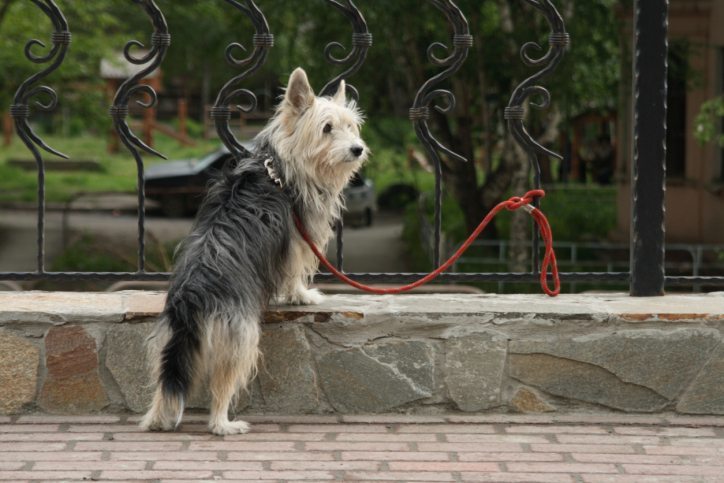
There are two ways to keep your dog on your property. One is to put up a fence. The other is to boundary train your dog. Opting for the fence may seem to be the easy way – you install it and you’re done. Not necessarily. The trouble with a fence is that if your dog manages to get out through an open gate or hole, he will probably run.
If you don’t want to put up a fence because of the aesthetics or the cost, boundary training your dog isn’t all that difficult. It takes some time, but a well trained dog will stay on his own property with or without the use of a shock collar whether he is outside with his owner or alone.
Boundary Training with a Shock Collar
We’ve all seen the backyards with the little white flags denoting a dog’s boundaries with his new shock collar. These flags are for the dog and his owner alike. You need to learn his boundary as well as he does. In the initial training stages, walking him around his new boundary line is key. If you know the line as well as he does, you will never make the mistake of calling him over the line or thinking he is out of range when he isn’t.
Boundary Training Without a Shock Collar
This is done the same way as training your dog for just about everything else. Repetition and reward. This process takes a lot more time than using the shock collar because you will have to be the one to police your dog rather than the equipment. But if you are hesitant about using a device such as a shock collar, boundary training your dog without the use of an electronic device is a possibility with a lot of time and patience.
It is a whole lot easier to start this with a puppy (mostly because they are easier to catch if they run). Every time you take your puppy or dog outside, walk him around the boundary of your yard, or the boundary you would like him to stay inside. It is easier for him to learn if you have visual boundaries, such as a street or woods, to denote the edge of the line. Every time he crosses the line, you must pull him back in. When he stays on the proper side of the line, praise him. Spend time while you are indoors working on the commands “come” and “stop”. If he is alert and responsive to these commands at all times, boundary training will be a whole lot less stressful for both of you.
Photo credit: Thinkstock












Hi to every single one, it’s genuinely a fastidious
for me to pay a visit this website, it contains priceless Information.